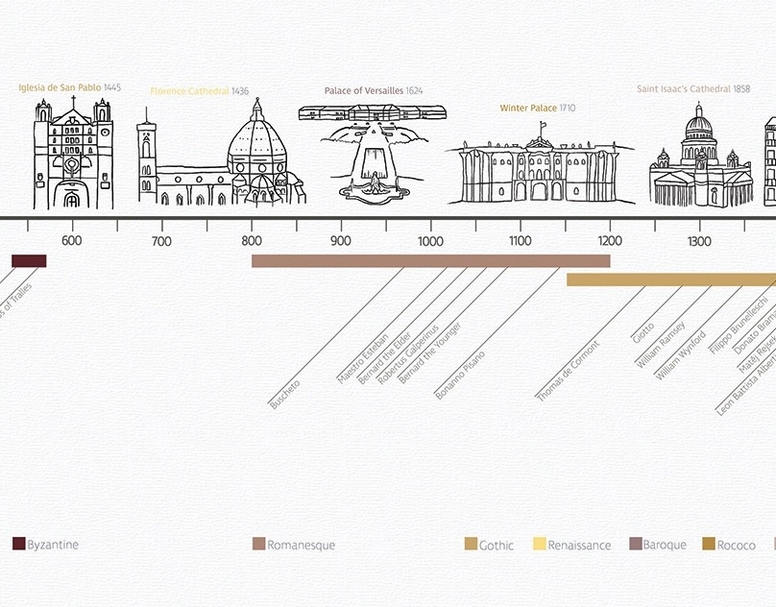
Architecture has been an integral part of human civilization since the dawn of time. The history of architecture is a long and fascinating one, with many different styles and periods that have influenced the way we build and design structures. Here is a brief timeline of some of the most important periods in architectural history:
– Prehistoric Times (11,600 BCE to 3,500 BCE): Before recorded history, humans constructed earthen mounds, stone circles, megaliths, and structures that often puzzle modern-day archaeologists. Prehistoric architecture includes monumental structures such as Stonehenge, cliff dwellings in the Americas, and thatch and mud structures lost to time .
– Ancient Architecture (3000 BCE to 500 CE): The ancient period saw the rise of some of the most iconic architectural styles in history. The Egyptians built pyramids, temples, and tombs, while the Greeks and Romans developed the classical style of architecture, which is characterized by symmetry, proportion, and harmony .
– Medieval Architecture (500 CE to 1500 CE): The medieval period saw the development of Gothic architecture, which is characterized by its pointed arches, ribbed vaults, and flying buttresses. This style was used in the construction of many of Europe’s most famous cathedrals, including Notre Dame and Chartres .
– Renaissance Architecture (1400 CE to 1600 CE): The Renaissance period saw a revival of classical architecture, with architects looking to the past for inspiration. This period saw the construction of many of the world’s most famous buildings, including St. Peter’s Basilica in Rome and the Palazzo Rucellai in Florence .
– Baroque Architecture (1600 CE to 1750 CE): The Baroque period was characterized by its ornate and elaborate style, with architects using curves, domes, and intricate details to create grand and dramatic buildings. This style was used in the construction of many of Europe’s most famous palaces and churches .
– Neoclassical Architecture (1750 CE to 1900 CE): The Neoclassical period saw a return to the classical style of architecture, with architects looking to ancient Greece and Rome for inspiration. This style is characterized by its use of columns, pediments, and other classical elements .
– Modern Architecture (1900 CE to present): The modern period has seen the rise of many different architectural styles, including Art Deco, Brutalism, and Postmodernism. Modern architecture is characterized by its use of new materials and technologies, as well as its focus on functionality and simplicity .
This is just a brief overview of the history of architecture. There are many other styles and periods that have influenced the way we build and design structures. Architecture is an ever-evolving art form that continues to inspire and amaze us to this day.
